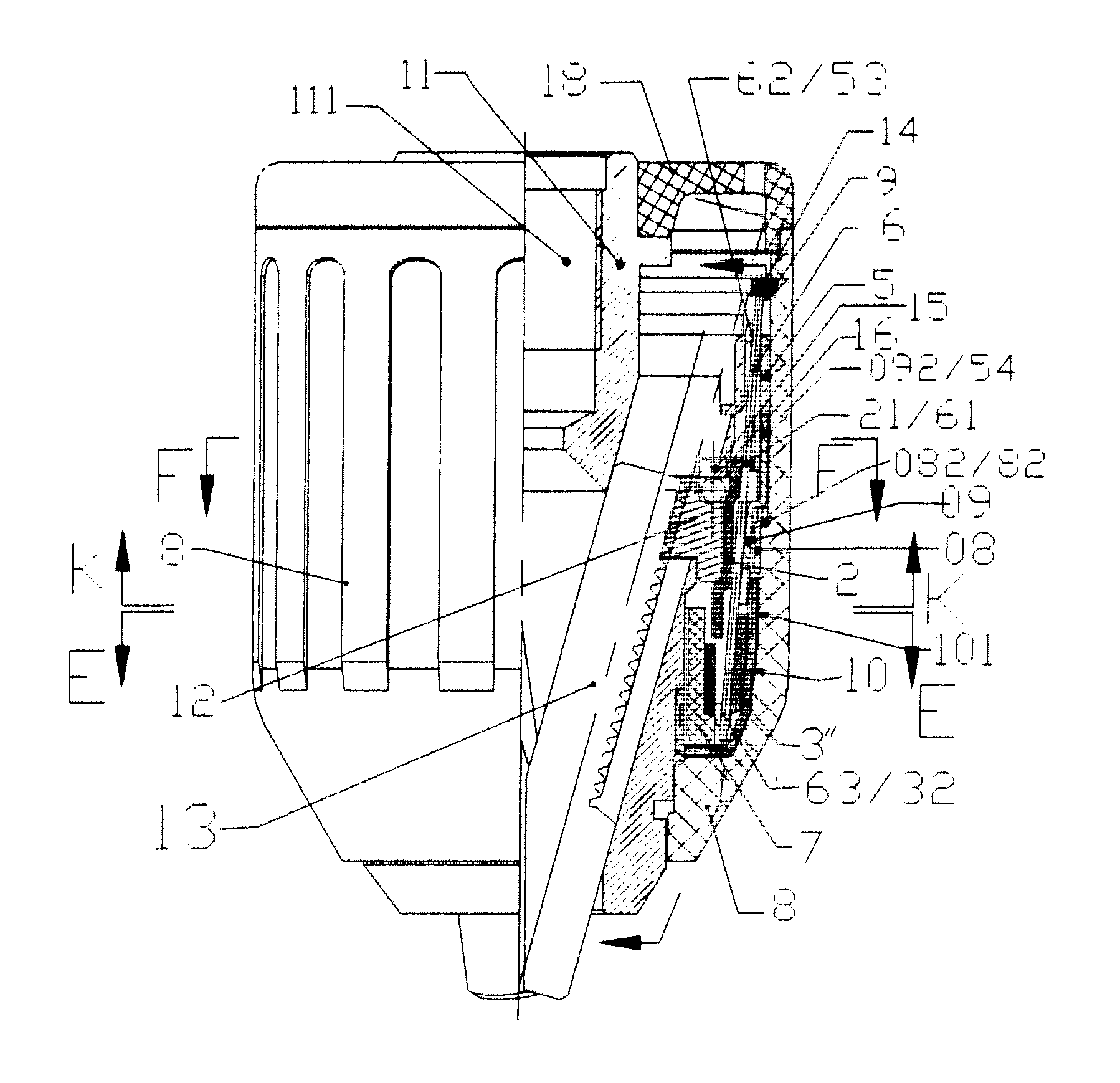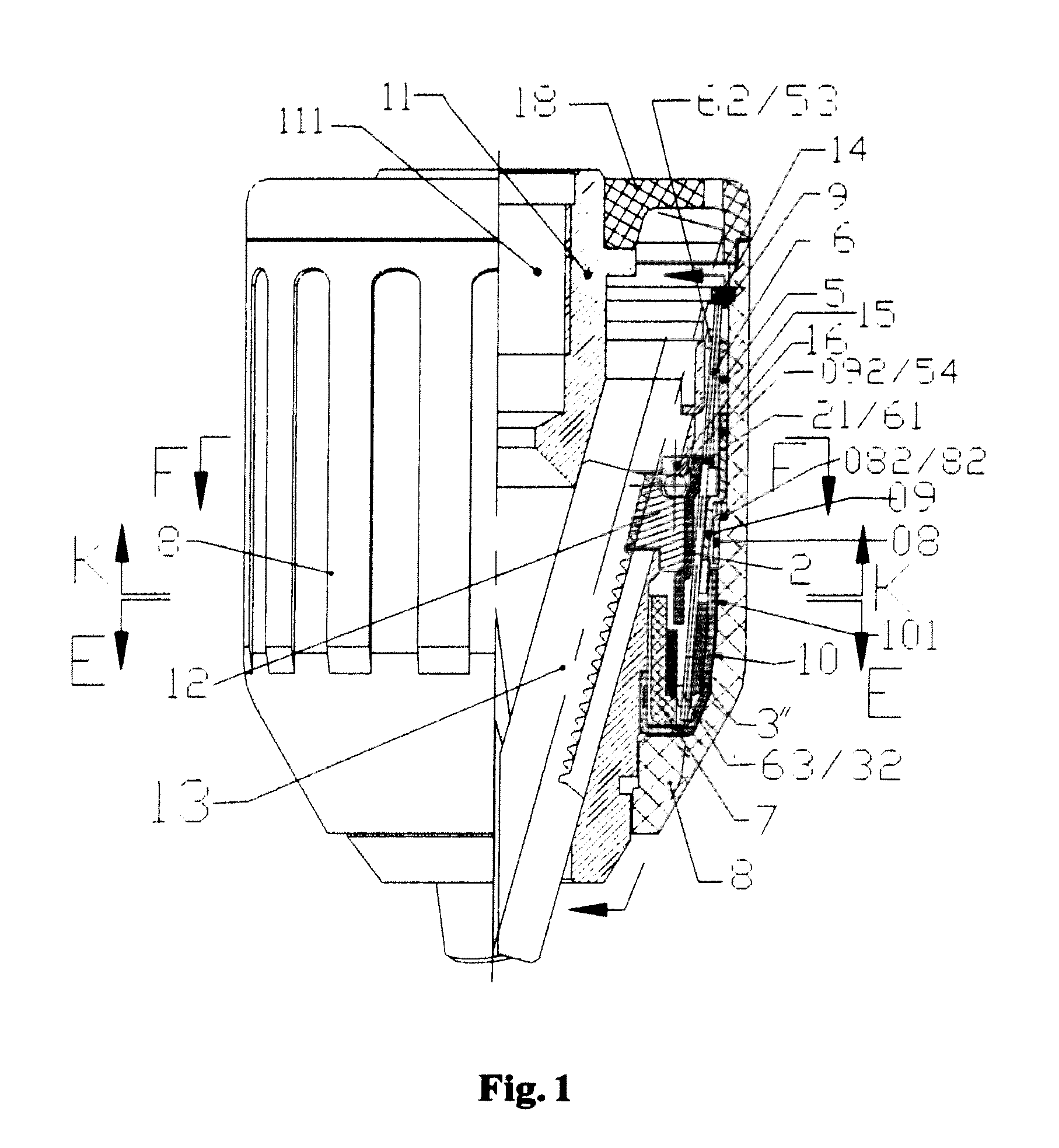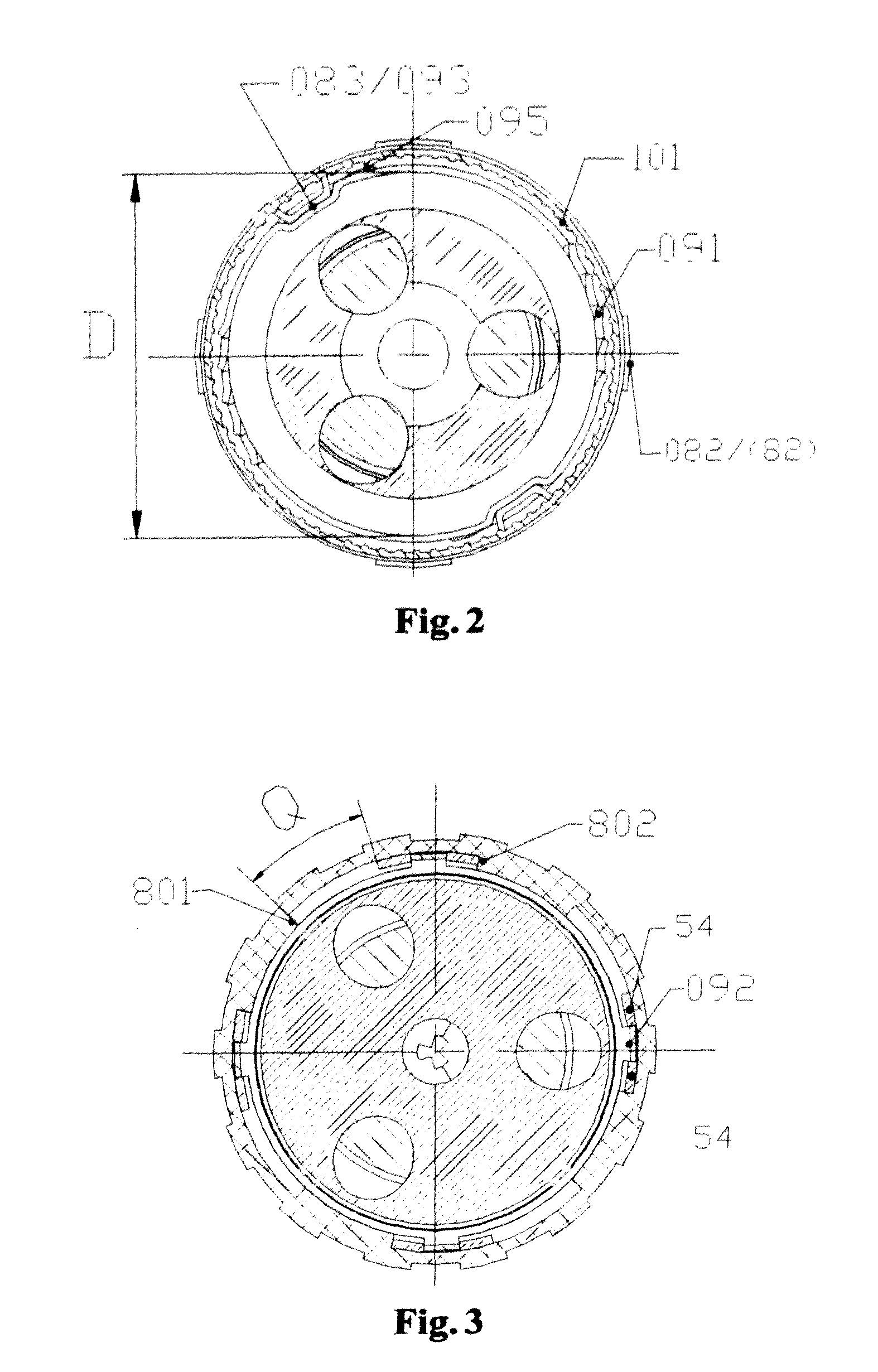Force increasing self-locking drill chuck and self-locking mechanism thereof
a self-locking, drill chuck technology, applied in the field of drill chucks, can solve the problems of unfavorable design of the overall the inability of the jaws to firmly clamp the tool handle, and the inability to use the structural design of the drill chuck in the design of the drill chuck
- Summary
- Abstract
- Description
- Claims
- Application Information
AI Technical Summary
Benefits of technology
Problems solved by technology
Method used
Image
Examples
first embodiment
The First Embodiment
[0065]FIGS. 1 to 8b illustrate a force increasing self-locking drill chuck according to the first embodiment of the present invention. Wherein, the assembling of respective assemblies is described as follows:
[0066]as shown in FIG. 1, three jaws 13 are mounted within three slanting holes of the chuck body 11 forming an acute angle with respect to the base axis; two split-body nuts 12 are assembled on the chuck body 11 and engage with the threads of the three jaws, the split-body nuts and the outer nut sleeve 2 are assembled integrally by interference.
[0067]The rear cover 18 is fixedly mounted at the rear end of the chuck body 11, and the coat 8 is axially positioned on the chuck body via the clamp spring 14 and the washer 9. The clutch tooth sleeve 10 is fixed at the front end of the chuck body 11.
[0068]The driving member 5 is rotatably put around the chuck body 11, and the force bearing member 3″ and the shaft sleeve 7 are also rotatably put around the chuck body...
second embodiment
The Second Embodiment
[0092]FIGS. 9 to 14 illustrate a self-locking drill chuck according to the second embodiment of the present invention, and being different from the first embodiment, in the second embodiment the lever 6, the driving member 5 and the force bearing element 3″ are removed.
[0093]The assembling of respective assemblies of the self-locking drill chuck according to the present invention is described hereinafter in conjunction with FIGS. 9 to 14.
[0094]As shown in FIGS. 9 to 14, the nut sleeve includes a key 202, the key 082 of the control sleeve 08 is assembled within the groove between the groove side walls 801 and 802 of the coat, and the control sleeve 08 rotates synchronously with the coat; the key 202 of the nut sleeve and the key 092 of the oval deformation ring are located between the groove side walls 802 and 801 of the coat and can rotate by the angle Q with respect to the coat.
[0095]As shown in FIGS. 10 and 13, in the state that the coat can rotate freely and ...
third embodiment
The Third Embodiment
[0104]FIGS. 15 to 17 illustrate a self-locking drill chuck according to the third embodiment of the present invention.
[0105]Being different from the second embodiment, in the third embodiment, the nut sleeve 2 and the oval deformation ring 09 in the second embodiment are formed integrally as the oval deformation ring 09″, that is, the rear portion (the function of a nut sleeve) of the oval deformation ring 09″ integrally fastens the split-body nuts 12, and thus the split-body nuts 12 are positioned at the chuck body, with the restoration groove 093, the positioning portion 095 and the teeth 091 formed at the front portion.
PUM
 Login to View More
Login to View More Abstract
Description
Claims
Application Information
 Login to View More
Login to View More - R&D
- Intellectual Property
- Life Sciences
- Materials
- Tech Scout
- Unparalleled Data Quality
- Higher Quality Content
- 60% Fewer Hallucinations
Browse by: Latest US Patents, China's latest patents, Technical Efficacy Thesaurus, Application Domain, Technology Topic, Popular Technical Reports.
© 2025 PatSnap. All rights reserved.Legal|Privacy policy|Modern Slavery Act Transparency Statement|Sitemap|About US| Contact US: help@patsnap.com



